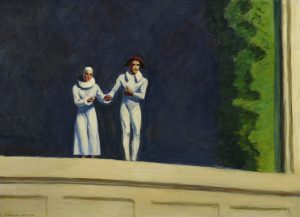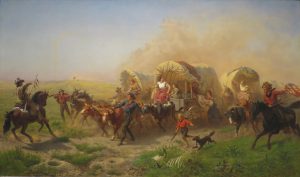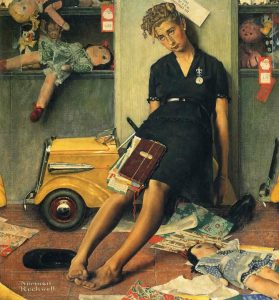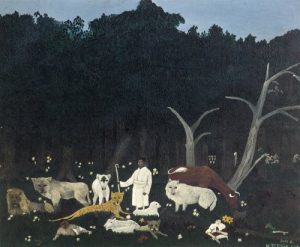The week of November 12th – 18th was a crazy one – I cannot remember so much art being offered in the span of 5 days. In fact, the action started on Sunday evening and finished on Friday afternoon with Christie’s Day sale of Post-War and Contemporary (which we will go over later in the week) and Sotheby’s American art. Christie’s kindly waited until the following week to put on their sale of American art.
Before I get into the nuts and bolts of the sale, I want to, once again, ask the following questions. Why are they jamming all these sales into one week? There is just too much art and nice works are not selling because of the huge numbers. Why are they (both salerooms) taking some of the best works from the American and European markets and putting them in the Impressionist/Modern or Post-War/Contemporary sales? Look, those areas of the market do not need a few extra BIG lots, but the American and European markets need the important works to not only create successful sales but generate the press they need and deserve. O’Keeffe, Hartley, Stewart, etc. belong in the American painting sales. Munnings, Grimshaw, Courbet, Corot, and Beraud belong in the European sales. A few extra $500K, $1M $8M, or $10M works would have made headlines for those departments and displayed real strength in the American and European markets. Now that I got that out of the way, let’s see how Sotheby’s American sale fared.
On November 16th, while Christie’s Day sale of Post-War/Contemporary works was going on, Sotheby’s offered up a selection of American art. Taking the front position was a late (and I mean late) work by Edward Hopper titled Two Comedians. Sotheby’s dedicated 8 pages in their catalog to the artist’s last painting (done in 1966, when the artist was 84 years young). Estimated to bring $12-$18M, the painting found a taker at $10.8M hammer ($12.5M with the commission – w/c). I guess that in someone’s mind, it was a bargain since $90M was paid that week for another painting by Hopper. The problem is that the only thing the two works had in common was that Hopper painted them.
In second place was a large painting by Emanuel Leutze titled Western Emigrant Train Bound for California Across The Plains, Alarmed By Approach Of Hostile Indians. In case you are not familiar with this artist, his most famous work is Washington Crossing the Delaware River (in the collection of the Metropolitan Museum of Art). Painted in 1863, that painting carried an estimate of $2.5-$3.5M and hammered down at $4M ($4.82M w/c). It was very nice to see that a classic mid-19th-century work generated a good deal of interest and a strong price. It shows that interesting and rare paintings from that period are still in demand.
The third spot was nabbed by Norman Rockwell’s Tired Salesgirl on Christmas Eve which carried a $5-$7M estimate and only managed to spark interest at $3.6M ($4.34M w/c). I would assume that the buyer bought in on the reserve.
There were a few other paintings that warrant mention. Horace Pippin’s Holy Mountain I set a record auction price for the artist at $2.7M ($3.3M w/c – est. $1.-$1.5M) – this painting last appeared on the market in 1987 and sold for $385K (the artist’s auction record, until last week). Joseph Leyendecker’s Votes for Woman must have struck a chord with a number of bidders and the $60-$80K work sold for $320K ($399K w/c); Georgia O’Keeffe’s Cottonwood Tree in Spring (being sold by the O’Keeffe Museum) generated $3.2M ($3.86M w/c – est. $1.5-$2.5M); and the last lot in the sale – Theodore Wores’ Chinese Musicians – made $390K ($483K w/c – est. $100-$150K). This sale also included two paintings from the Berkshire Museum (that saga never seems to end). The first to be offered was George H. Durrie’s Hunt in Winter Wood, which sold for $250K ($312K w/c – est. $300-$500K) and the second was Thomas Moran’s The Last Arrow which made $1.1M ($1.34M – est. $1.2-$1.8M). Neither generated much interest.
From the estimates and hammer prices for the works mentioned above, you might begin to get a feeling for how this sale went. Of the 82 works offered (there were 83 in the sale, but one was withdrawn – a Grant Wood), 56 sold (68.3% sell-through rate) and the total take was $36.9M ($44.1M w/c) – the low end of their estimate range was just about $39M – so without the buyer’s commissions, they fell short. Looking a bit closer we find that 20 works sold below, 19 within, and 17 above their estimated range, not to mention the 26 that were left unsold, leaving them with an accuracy rate of 23%.
What really bothered me was that the first 44 pages of the catalog discussed 5 important works that were being sold in either the Impressionist or Contemporary sales – Hartley, Davis, Lawrence, and two by O’Keeffe. Those 5 works would have potentially added more than $50M to this sale. In the end, 4 of the 5 sold for a combined $32.47M – the Hartley, which carried an over-ambitious estimate of about $30M did not sell. Had those paintings been sold in this sale, they would have created a sale of more than $76M – a HUGE and press-worthy number for the American department.




